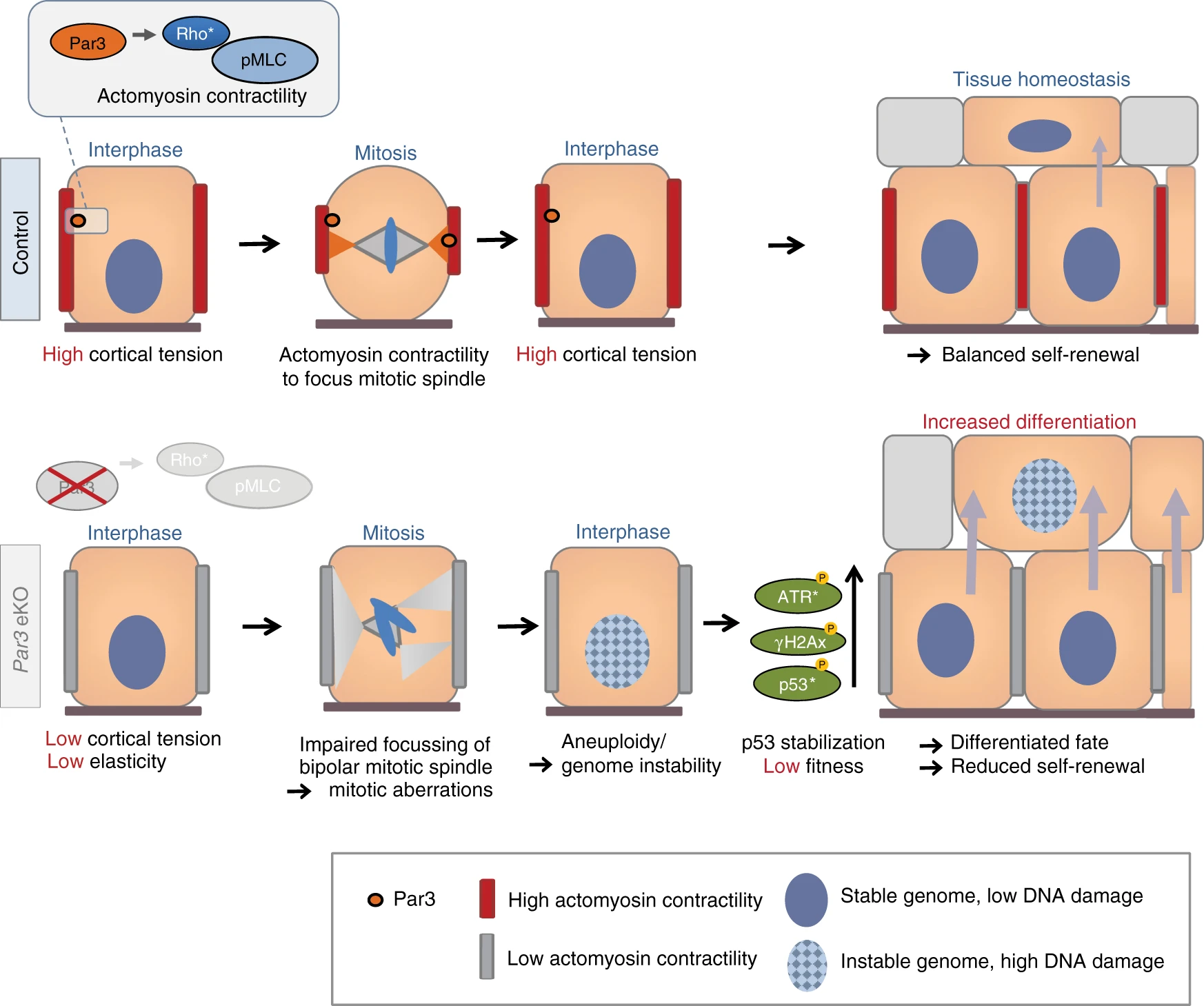Cell polarity, cell mechanics & genome integrity
Eukaryotic development depends on dynamic cell shape changes and segregation of fate determinants to coordinate compartmentalization at larger scale. Work by several laboratories using epithelial systems revealed a tight interplay of polarity proteins, adhesion molecules and mechanochemical pathways in tissue organization. For a recent review article on this topic see Dias Gomes & Iden, EMBO J 2021.
The skin is a tensile tissue constantly exposed to mechanical stress. How polarity proteins cooperate in stratified epithelia like the epidermis, and how such cross-talk affects chemical and mechanical signalling at epidermal adhesions is poorly understood. In this project we ask how junctional polarity proteins contribute to epidermal mechanosensation and -transduction upon varying extrinsic and intrinsic forces. We investigate the antagonism of different polarity complexes and its role in balancing intercellular adhesion and actomyosin contractility.
We addressed how polarity networks sense and respond to mechanical cues, and how polarity proteins that localize to TJs regulate biophysical properties and particularly actomyosin contractility to ensure tissue integrity. For this we used biophysical approaches (e.g. atomic force spectroscopy), confocal microscopy as well as functional assays to investigate coupling of biochemical and chemical signals at epithelial junctions. This work revealed unexpected molecular mechanisms underlying the stem cell loss and premature differentiation following Par3 inactivation in the epidermis (Dias Gomes, Letzian et al., 2019). We found that the apical polarity protein Par3 couples mechanical and biochemical signals at epithelial cell-cell contacts, and that disturbed polarity signaling leads to reduced Rho/ROCK/myosin-mediated contractility, reduced viscoelasticity, and impaired intrinsic force generation. These defects in cellular mechanics result in mitotic infidelity, aneuploidy, increased DNA damage responses, p53 stabilization and premature differentiation. Together these data suggest a new paradigm how polarity proteins can foster fate decisions in the epidermis, besides mediating e.g. mitotic spindle orientation.


